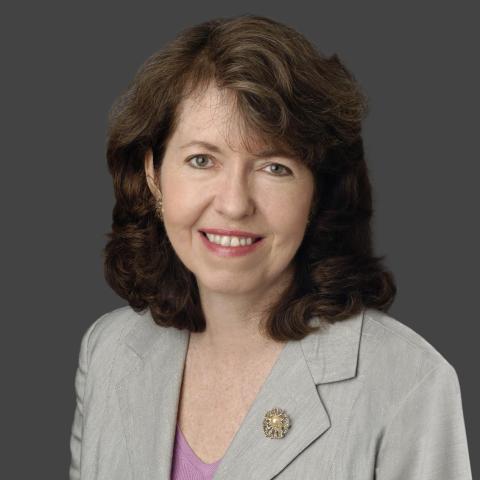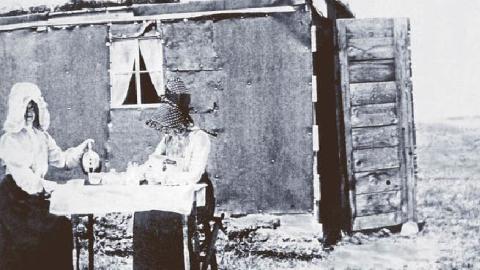‘Go West, young man, go West and grow up with the country.” Substitute the word “woman” for “man,” and this famous exhortation—attributed to newspaper editor Horace Greeley in 1865—could serve as the epigraph for Winifred Gallagher’s book on the forgotten women of the American frontier.
In “New Women in the Old West” (Penguin Press, 277 pages, $28), Ms. Gallagher examines the decades from the settler period of the 1840s to 1920, when the ratification of the 19th Amendment gave all American women the right to vote. Most Western women had won that right years earlier, as Ms. Gallagher notes. Wyoming Territory enfranchised women in 1869. Utah followed suit the next year. By 1914 most women in the West could vote, a right denied their sisters in the East.
“New Women in the Old West” is really two books deftly stitched together. It is a brisk history of the galvanizing role played by Western women in the national struggle for suffrage. It is also a kind of group portrait of the independent, resourceful women who managed to forge places for themselves in a man’s world. Ms. Gallagher tells her story through a sometimes dizzying array of mini-biographies of dozens of women—from the courageous early settlers to the politically savvy women who labored in support of suffrage. Her aim, she writes, is to look beyond the “anonymous aproned helpmeets portrayed in the numerous generic ‘Pioneer Wife’ memorial statues.”
She profiles the ambitious women, often unmarried, who worked as homesteaders, teachers, entrepreneurs, ranchers and cowgirls. The most effective profiles let the subjects speak for themselves in quotations that Ms. Gallagher culls from diaries, journals and letters. Most women, however, left no written record, and compiling their stories required a prodigious amount of research. Ms. Gallagher patches together their biographies from tax rolls and other public documents, as well as from private archives and newspapers.
A few well-known women walk these pages. Sharpshooter Annie Oakley—née Phoebe Ann Moses—is notable for receiving the same pay as the male stars of “Buffalo Bill’s Wild West Show.” The first female member of Congress, Jeannette Rankin, a Montanan, was a dynamic campaigner for female suffrage.
Most of the women profiled, however, are little known beyond the historical societies of the communities in which they lived. There is, for instance, Sarah Jane Cummins, whose story opens the book. She records in her diary her journey by covered wagon from St. Joseph, Mo., to Oregon’s Willamette Valley. Another example is Sarah Royce, who took on the role of community builder when she held church services in her “canvas house” in a California mining town and then opened a home school in the town where her family finally settled.
A testament to the depth of Ms. Gallagher’s research is the range of her cast of characters. It includes Native American, black and Hispanic women as well as Asians and other immigrants. Among them is Mary Ellen Pleasant, a black entrepreneur who operated restaurants and boarding houses in San Francisco. W.E.B. Du Bois called her “one of the shrewdest business minds of the State.” Lalu Nathoy—later known as Polly Bemis—arrived in this country from China, where her father had sold her to a broker seeking prostitutes for San Francisco’s Chinatown. She became a pioneer homesteader in Idaho. The first female Native American physician was a Nebraskan named Susan La Flesche Picotte, who was part Omaha.
Ms. Gallagher has an eye for the telling detail. Clara Shortridge Foltz, the first female attorney on the West Coast, won national notice as the “Portia of the Pacific,” an allusion to the acute heroine of “The Merchant of Venice.” Blandina Segale, a young Sisters of Charity missionary in New Mexico, earned the respect of Billy the Kid when she treated a wounded member of his band of bandits. When the Kid’s gang later held up a stagecoach in which she happened to be riding, Billy bowed to Sister Blandina, lifted his hat, and, as she later related, “stopped to give us some of his wonderful antics on bronco maneuvers” before riding off without robbing anyone.
Ms. Gallagher, a prolific author whose last book was a history of the continent-spanning U.S. postal service, identifies several reasons why Western women gained the right to vote first. Unlike the hidebound East, the West’s settler society was “simpler, more forward-looking, and less encumbered by tradition, precedent and an entrenched, oppositional establishment.” It took “two industrious partners to support a family, which increased women’s work and its value.” Women’s record of hard work and dedication “made them a force, albeit nonelectoral, to be reckoned with.”
Ms. Gallagher credits the 1862 Homestead Act, which permitted female as well as male heads of household to claim free land in the West. “At a time when most women had few economic opportunities at all, the chance to own real estate that could support an independent life or produce capital to fund their next ventures was a stunning advance,” she writes. Women’s names on the tax rolls next to those of their male neighbors became “an important argument for full citizenship.”
Also influential was the Morrill Land-Grant Act of 1862, which provided for the establishment of tuition-free state colleges and universities and offered opportunities for women to obtain academic degrees. By 1890, Ms. Gallagher says, 14.5% of the West’s female population worked as lawyers, doctors and other professionals, compared with a national rate of 8%.
Unsurprisingly, a number of the women Ms. Gallagher profiles held prejudices that were commonplace in their day but are deplored in ours. She doesn’t shy away from discussion of their racist, anti-immigrant or anti-Catholic views, but neither does she let those views “cancel” the women’s accomplishments. In this she is blessedly unlike the American Library Association, which in 2018 stripped Laura Ingalls Wilder’s name from a major literary award over concerns about how the author referred to blacks and Native Americans in her “Little House on the Prairie” books.
The author’s interpretation of American history overall is another story. Ms. Gallagher largely buys into the left’s negative portrait of America’s past and refers frequently to the takeover of the West by white “settler-colonizers.” The agrarian displacements of the Industrial Age are the result of “me-first industrial capitalism” and Wall Street’s “rapacious 1 percent.” Men are sometimes dismissed as part of the “patriarchy.” The Spanish-American War is the result of the U.S.’s “imperialistic” foreign policy. “New Women in the Old West” would be a better book if Ms. Gallagher hadn’t relied on the Howard Zinn version of American history.
Otherwise, her chronicle is both informative and enjoyable to read. Its roster of the accomplished, often heroic, women of the West is inspiring. I am reminded of my late grandmother, born in Salt Lake City in 1891, herself the granddaughter of women who had braved the cross-country trek along the Mormon Trail. “Remember that you come of frontier stock,” my grandmother used to admonish her daughters and granddaughters. As a child, I had an incomplete understanding of what she meant. Thanks to “New Women of the Old West,” I better understand and appreciate that legacy.
Read in the Wall Street Journal















